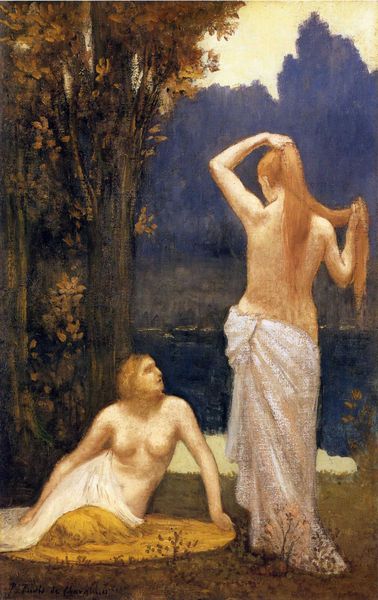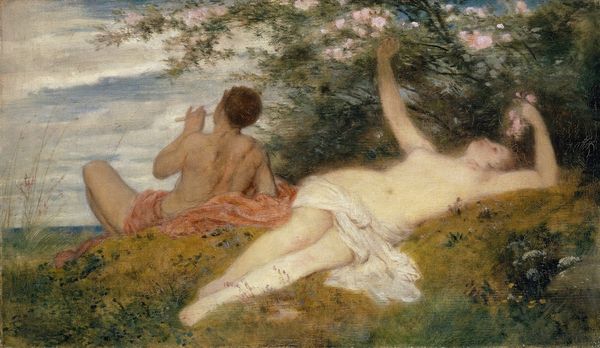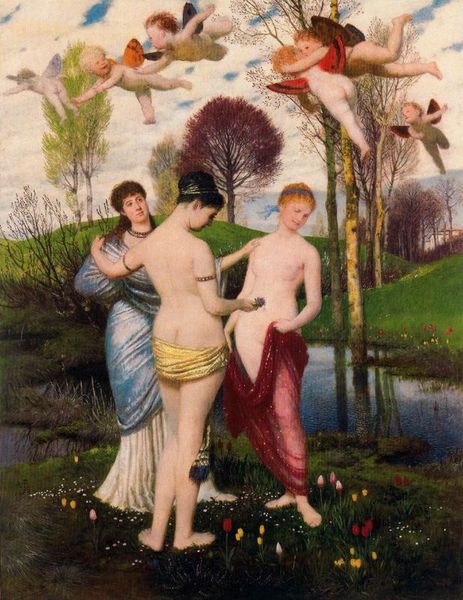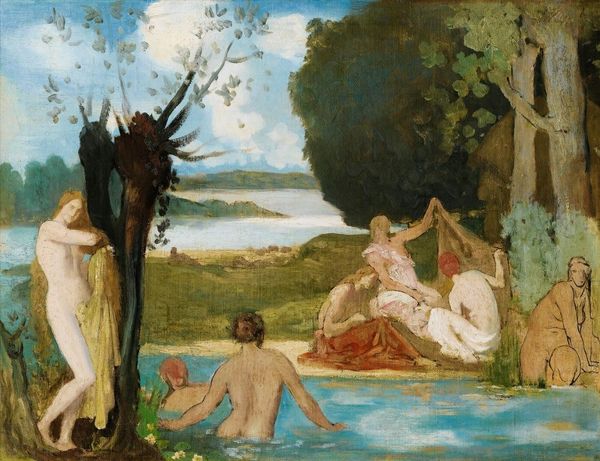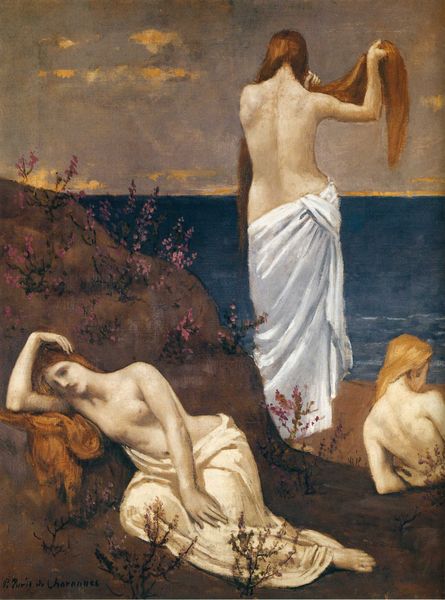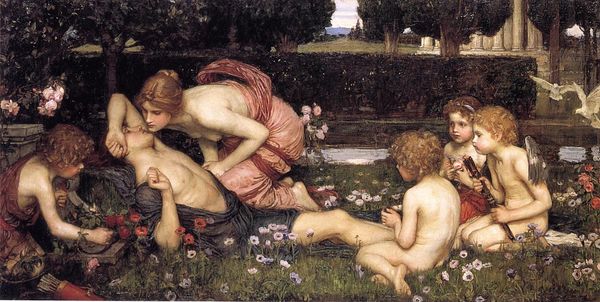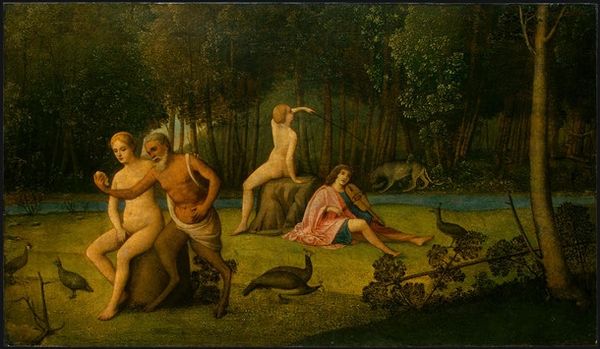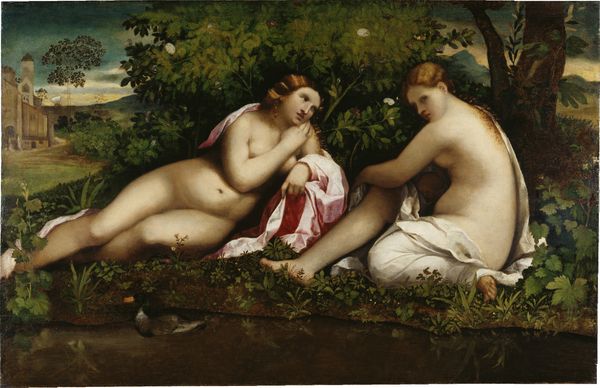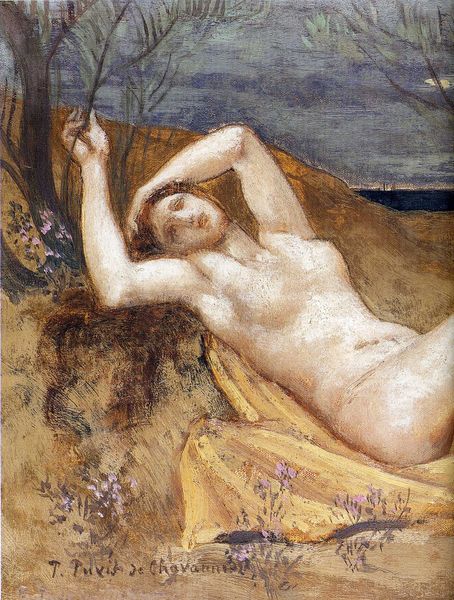
painting, oil-paint
#
gouache
#
painting
#
oil-paint
#
landscape
#
figuration
#
oil painting
#
female-nude
#
water
#
symbolism
#
genre-painting
#
academic-art
#
nude
Copyright: Public domain
Curator: We're looking at "Summer," an oil painting from 1891 by Pierre Puvis de Chavannes. The work exemplifies a classic theme executed with striking academic skill. Art Historian: It strikes me immediately as an Arcadian fantasy. There’s a coolness despite the implied warmth of summer, an idealized vision of female leisure. Curator: Precisely. Observe how Puvis de Chavannes uses a limited palette and simplified forms to create a sense of timelessness. The composition, with its horizontal emphasis and carefully arranged figures, speaks volumes about his approach. The application is also notable, seeming more like fresco in its thinness and matte finish. Art Historian: Yes, but that "timelessness" also taps into centuries of symbolism. The nude figures bathing – it echoes classical depictions of nymphs, a connection to nature, fertility, and a kind of primal innocence. The landscape, though subdued in color, provides the stage for this eternal tableau. These nudes draw heavily on the history of symbolic women figures. Curator: Interesting. Though, focusing on pure form, the strategic placement of the figures guides our gaze. Each one, through pose and gesture, contributes to the overall equilibrium of the picture plane. Art Historian: Of course. Consider too, how water consistently acts as a symbol of cleansing and rebirth. The figures aren't simply "bathing"; they’re participating in a ritual, an almost sacred act connected to the renewal of the season itself. Water carries emotional and psychological meaning. Curator: One might interpret that equilibrium you mentioned more like frozen and static; devoid of dramatic tonal variations, which reinforces its constructed, rather than observed, nature. Art Historian: Well, isn’t summer often portrayed as such? A long, sustained moment of warmth and bounty. I agree it's deliberate—these nudes invite us into an eternal pastoral dream. Curator: Indeed, de Chavannes masterfully blended a dream of Arcadian antiquity with modernist surface awareness. Art Historian: His composition asks us to see beauty and the underlying harmony of life. And perhaps even an echo of that beauty in ourselves.
Comments
No comments
Be the first to comment and join the conversation on the ultimate creative platform.
